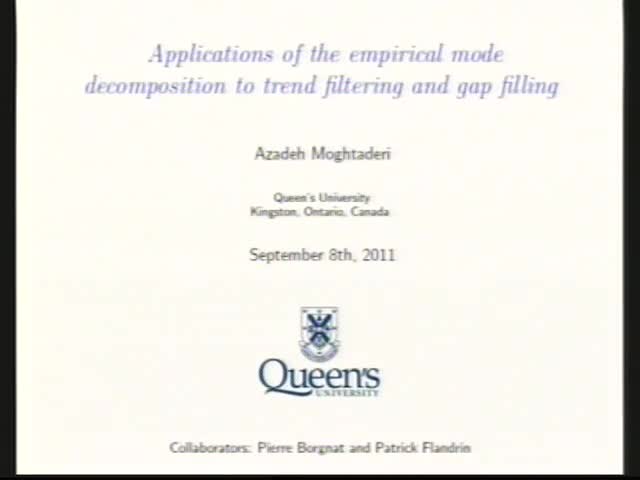Applications of the Empirical Mode Decomposition to Trend Filtering and Gap Filling
Presenter
September 8, 2011
Keywords:
- Time series analysis
MSC:
- 37M10
Abstract
In this talk, we will address two fundamental problems in time series analysis: The problem of filtering (or extracting) low-frequency trend, and the problem of interpolating missing data. We propose nonparametric techniques to solve these two problems. These techniques are based on the empirical mode decomposition (EMD), and accordingly they are named EMD trend filtering and EMD
interpolation. The EMD is an algorithm which decomposes a time series into an additive superposition of oscillatory components. These components are known as the intrinsic mode functions (IMFs) of the time series.
The basic observation behind EMD trend filtering is that higher-order IMFs exhibit slower oscillations. Since low-frequency trend is comprised of slow oscillations relative to the residual time series, in many situations it should be captured by one or more of the higher-order IMFs. It remains to answer the question "How many higher-order IMFs are needed?" We propose a method to answer this question automatically. This method is based on empirical evidence, which indicates that certain changes in the IMFs' energies and zero crossing numbers demarcate the trend and residual time series. To illustrate the performance of EMD trend filtering, we apply it to artificial time series containing different types of trend, as well as several real-world time series.
The latter group includes Standards & Poor 500 index data, environmental data, sunspot numbers, and data gathered from an urban bicycle rental system.
On the other hand, EMD interpolation is based on the following basic observation: If a time series has missing data, then the IMFs of the time series have missing data as well. However, interpolating the missing data of each IMF individually should be easier than interpolating the missing data of the original time series. This is because each IMF varies much more slowly than the original time series, and also because the IMFs have regularity properties which can be exploited. The performance of EMD interpolation is illustrated by its application to artificial time series, as well as speech data and pollutant data.
